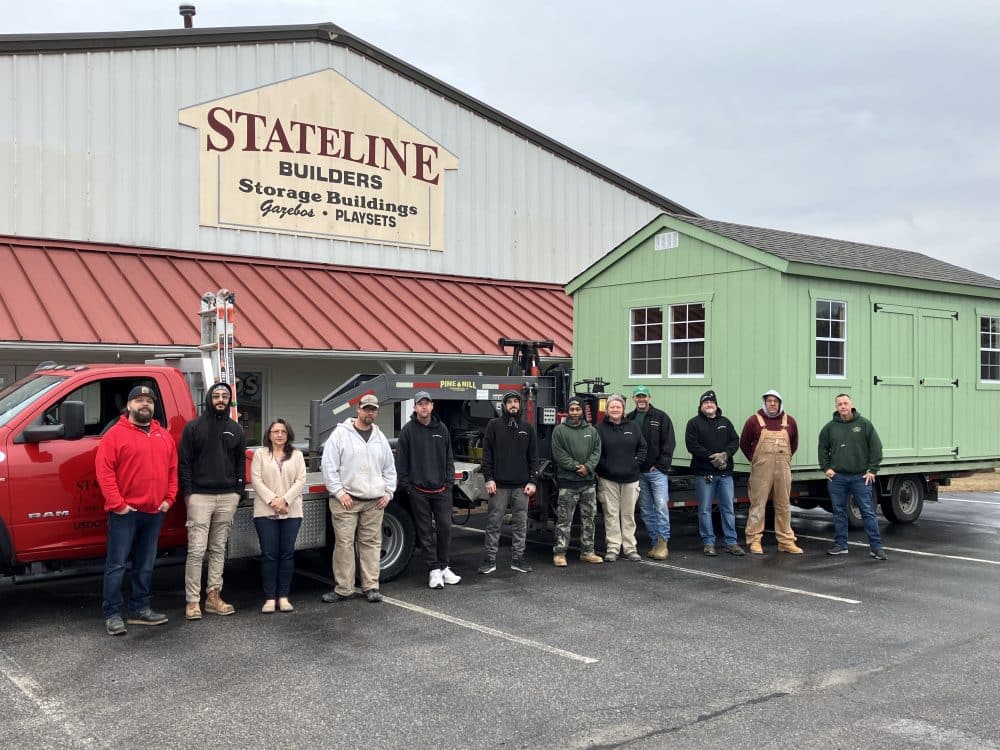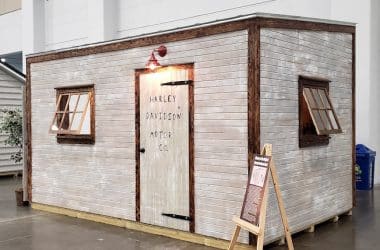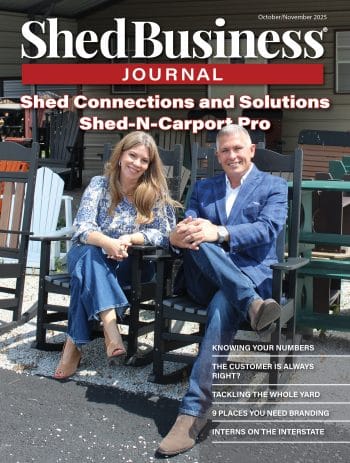
Way back in 1977, when Carter was president, Star Wars was in theaters, and disco was king, Jimmy Lewis was a laid-off ironworker. With some idle time, he decided to build a shed in the backyard.
His first attempt was a bit disappointing—so much so that he decided to sell that one and try again. He had built it close to the house where his tools and electricity were but had built it on skids with the intention of dragging it to the backyard with his pickup truck. So, fortunately, it was already a portable building, sort of.
Instead of dragging it to the backyard, he dragged it to the front and hung a for sale sign on it. As he expected, someone down the street wanted to buy it. He sold it and then dragged it down the road to their house.
The pavement nearly disintegrated the skids, but, fortunately, it wasn’t far. There was probably something illegal about that, but you could get away with a lot more back in the ’70s.
He got to work right away building the second one and making some improvements. Just as he was finishing it up, a woman pulled up the driveway.
She said, “I saw you building one of those last week. Do you build them to sell?”
That was not his original intent, but the money would come in handy. News had come that the layoff was going to be extended, and the unemployment check wasn’t enough to provide for his young family.
So, he quickly replied to the lady with a confident, “Yes ma’am, that’s what I do, I build ‘em and sell ‘em.”
She said, “I live about 10 miles down the road, can you deliver it, too?”
Not sure as to how he was going to do this, he said with confidence, “Yes, ma’am, I build ‘em, sell ‘em, and deliver ‘em.”
On that note, he had his second sale.
His brother lived down the street and was a mechanic by trade. His dad, conveniently, was also nearby and owned a junkyard. So, with a little help from the family, they found some World War II surplus bomber axles, affixed them to some scrap iron, and built something of a shed trailer to deliver the shed.
After that, he recruited some help from coworkers who were also laid off and began building sheds in the backyard.
Eventually, he was called back to his real job in ironwork, but by that time, he was making more money from the convenience of his own home and enjoying what he was doing. So, he quit ironworking and went into the shed business.
At that time, there wasn’t a shed industry. Imagine not having the knowledge of the Internet at your fingertips, nor the ability to network and share ideas. In that era, every shed builder was a pioneer in his own way.
The next year the city zoning department forced him to stop working from home, and he was faced with the challenge of moving his operation to a commercial location.
Down the road a few miles, located in Moyock, North Carolina, right along the Virginia state line, a little shop came up for rent, right on the main highway. At that time, it was cheap real estate far outside of the big city of Norfolk, Virginia. Moyock was just a small town with a two-lane highway, no traffic lights, and no subdivisions. Just a cut-through on the way to the Outer Banks.
It was in 1978 that Jimmy established his company—Stateline Builders. That same year, he built a new and improved shed trailer from his brother’s mobile home that burned down. He pulled it with his ’72 Chevy two-wheel drive ½ ton pickup.
The trailer didn’t have hydraulics. It just had a winch that would push the building to the back of the trailer, where it would then pivot and tilt and slide down a pair of ramps as the trailer was pulled out from under it.
The problem with a two-wheel drive truck is that when the weight of the building is at the back of the trailer, the tongue will lift the back of the truck up in the air, leaving the wheels spinning. Often, Jimmy would need the assistance of the customer, their neighbors, and anyone else he could find to climb into the back of the pickup truck and jump up and down to get traction.
These were tough times when money was tight and improvising was necessary.
Jimmy continued to build his business, based on a simple motto: “Do what you say you’re gonna do.” You just didn’t need a contract with him, and people knew it. Jimmy was a man of integrity. He never over-promised but always over-delivered, exceeding customer expectations. He built a quality product that he could be proud of, and if the customer wasn’t satisfied, he’d work circles around it until they were.
There was no SEO, SEM, CRM, or marketing department. Simply just by word of mouth and his reputation of dependability and quality came the job security that he so badly needed. After a while, he had all the work he could handle and zero debt.
Eventually, he had enough money saved to buy a new ¾ ton 4 by 4 truck, and by 1984, he had saved up enough money to buy a few acres of land and build his first shop.
Now 40 years later, that same shop in Moyock is the headquarters of Stateline Builders and is a well-known landmark in the community.
During the 1990s, Stateline Builders would expand with three company-owned sales lots located in Suffolk, Virginia, and Elizabeth City and Grandy, North Carolina.
In 2014, Jimmy retired and sold the business to me, his son. Since my childhood, I have seen the shed industry evolve from a fractured variety of grassroots mom-and-pop shops to national brands and networks.
With so many new companies evolving to cater to the industry, from rent-to-own (RTO) to building materials to shed transport equipment to sales and manufacturing software development, the industry is far more advanced, but nothing beats the old-fashioned values of a small family business.
We have competition like never before, but with a historic reputation, ethical values, and by simply looking out for our customers’ best interests, just like Dad did, we still have all the work we can handle.
Stateline Builders continues to run our shed business the old-fashioned way. We’re one of the few companies that do not use a network of independent contractors, but actually sell, build, and deliver its own sheds using a team of W-2 employees.
By doing it this way, we can maintain control of the whole transaction from start to finish and ensure that each customer is 100 percent satisfied.


